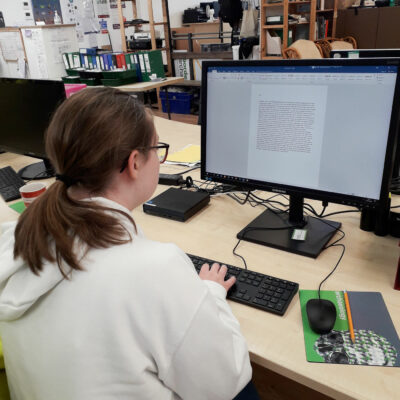Work experience, Jasmine Harris – Osteology diary
Yesterday I was in the osteology department and I learned that in the past, decapitation was a very common form of death in war and not in war. I also learned that dying during childbirth was a very common death among women. Cancer was also common, while the rates were lower than they are now, there were still deaths from it. In fact, death rates were so high that many people died of disease like the Black Death or Cholera before cancer killed them. I am now able to identify the different types of bones such as the skull, femur and even knee bones. I can also identify if they were wearing jewellery or not as their bones would turn a bluey-green type colour.
I was able to learn how to identify the gender and rough age of the skeleton in question and I can identify how they died as an estimate. The way I can identify these things are the size of the bones, whether they have platelets fused, unfused or fusing – this helps to tell the age but it gets difficult the older the skeleton was when they died. Although I’m not overly good at any of this, I can have a rough guess and I will sometimes be right but most the time I’m wrong.
While I was in the department, I learned that if there were complications with pregnancies the midwife would try to kill the baby so the mother could live and women back then had way less periods because they were always pregnant and always breastfeeding their child. I learned that in order to respect the dead, most civilisations like Anglo-Saxons and Romans cremated their dead but if they died as the result of suicide, they would cut the heads of the dead and put the heads by their feet or knees so they couldn’t come back to life.
I was able to learn how to tell whether the skeleton had broken bones too. The bones also felt like glass after they had been cremated but they weren’t cremated into powder but into fragments of bone and this had been done in different ways throughout time: Anglo-Saxons had large bits of bone left while Romans had small bits of bone left after cremation and they would be buried in a pot with the wood dust and their valuables. During old wars, soldiers who were killed were thrown into a pit to get rid of the bodies but they had dug the hole then killed the soldiers above the hole by decapitating them and throwing the bodies in after the head fell.
I learned that the Vikings would etch markings into their teeth to seem scarier and in the 1800s and 1900s, people who smoked pipes would have teeth that kind of eroded so the pipe would fit perfectly with a closed mouth.









